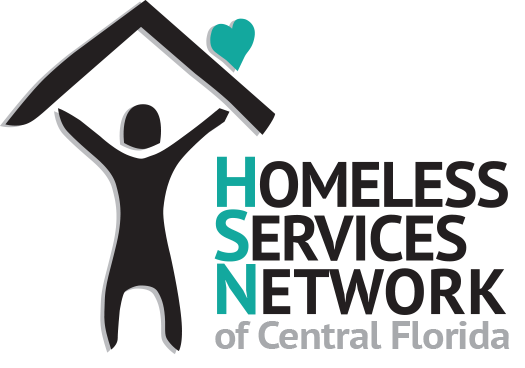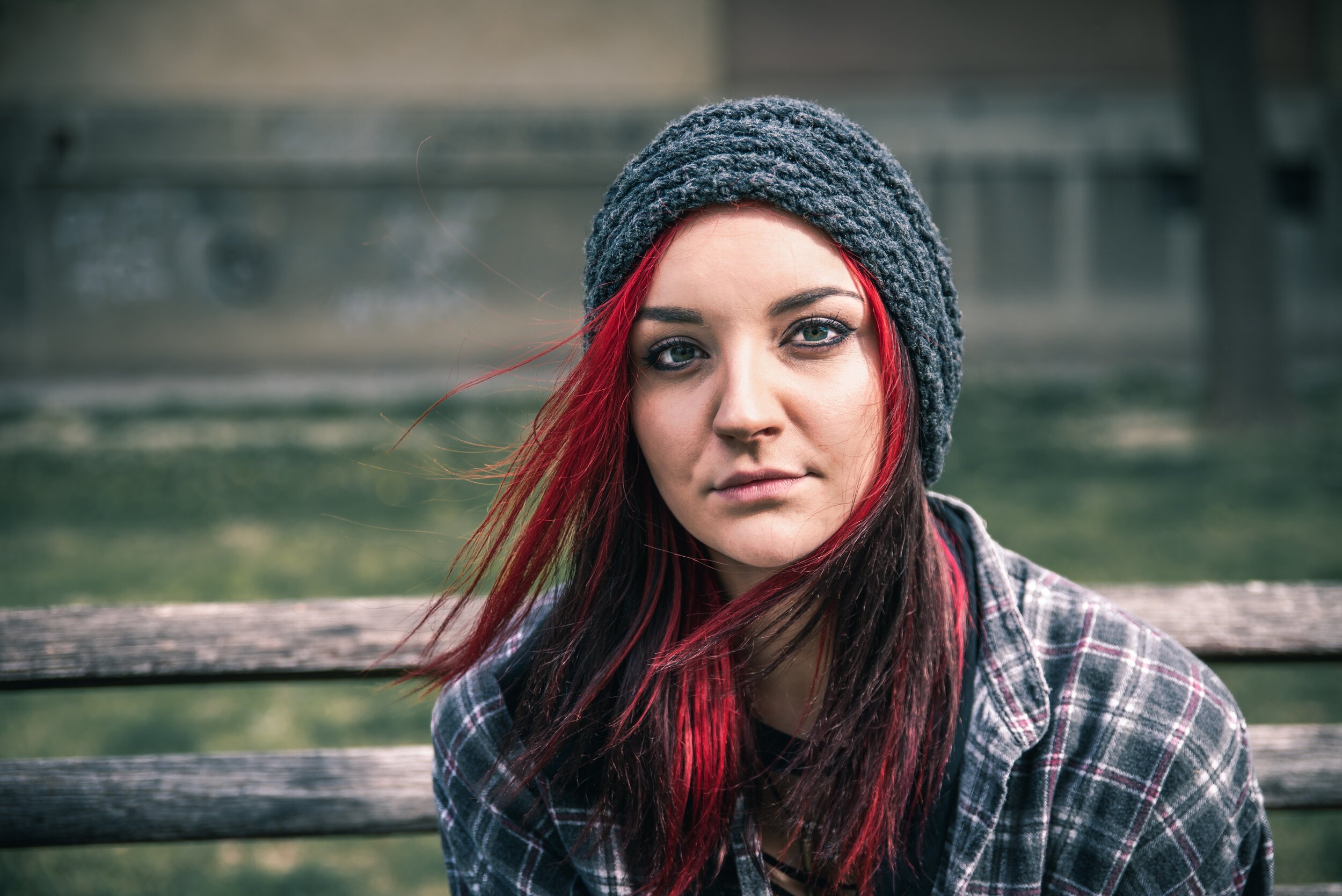
WELCOME HOME
Our Impact
We work to provide stable housing to people experiencing homelessness and connect them to the support they need to remain housed. Our primary focus is on veterans, youth, people with disabilities, victims of domestic violence and human trafficking, and families with minor children.
In 2024, we helped 5,132 people who were homeless return to stable, safe, long-term housing.
But on any given night, there are still more than 1,000 people in Orange, Osceola and Seminole counties who have no choice but to sleep on our streets, in their cars, or in the woods. Our region's emergency shelters are routinely full, and the average two-bedroom apartment (at $2,206 a month) is beyond their reach, even though many of them are working. Over 40% of this unsheltered population is made up of children and people age 55 and older.
The fastest growing population? Seniors 65 and older, and particularly older women who have outlived their husbands.
With your support, we can help them find a safe, dignified alternative to sleeping on our streets.
Our Vision
The Homeless Services Network of Central Florida is committed to the belief that everyone needs a safe place to call home.
Our mission is to lead Central Florida’s community-wide effort to help make any experience of homelessness rare and brief. We work with dedicated frontline partners — including nonprofit outreach staff, the Department of Veterans Affairs, local shelters, case managers, housing advocates, health-care providers, domestic violence agencies and human trafficking recovery programs. We help raise critical funds for housing, we recruit private landlords and property owners, we provide rental assistance to qualifying households, we help educate policy-makers through research and data, and we staff the locations where people can meet with a caring intake worker to address their needs.
Become an advocate for affordable housing and shelter!
Despite an estimated shortage of 97,649* housing units for our lowest wage-earners, virtually every attempt to create more affordable housing or homeless shelters in Central Florida has been met with neighborhood protests. Yet small, innovative housing and shelter solutions — located throughout the region — are the only realistic way to address the dire need. Please join our growing campaign to show you support affordable housing and shelter located in your neighborhood — or that, at the least, you’re willing to learn more. Click below to join the conversation!
The 2025 Point-in-Time Count results are IN
During the final week of January, more than 300 volunteers joined us for the 2025 Point-in-Time Count — our annual “census” of Central Floridians who are homeless. The count takes place in communities across the nation at least once every two years, and the data is critical to understanding the scope and trends of homelessness. Most importantly, it helps to guide our local leaders as they make policy and funding decisions.
This year — the first since Florida’s statewide ban on public sleeping and unauthorized camping — our surveyors noted a marked increase in the number of people unwilling to answer questions about where they’d slept. We also found that several encampments had recently been cleared and that people were now living farther back in the woods as they try to avoid arrest.
The overall result was a total count of 2,781 people in Orange, Osceola and Seminole counties, including those who were in emergency homeless shelters and those living without shelter. All told, that was just five people more than 2024 — a year that saw an 86% increase. While we can attribute some of the findings to our region’s success in getting people back into housing, and while the PIT data is always considered an undercount, we suspect that was especially true this year.
Still, we found some important trends:
More than 40% of Central Florida's homeless population are now children or people age 55 and older.
The number of people experiencing homelessness on Jan. 27 in Orange County — 1,972 — was down by 2.1% compared to the previous year. Seminole’s 436 total was a 3.8% increase over 2024, and Osceola County’s 373 total was up by 8.7% over last year.
Of the total, 1,090 people were found to be living on the streets, in the woods or in their cars in January, a decrease of just four people since 2024. That included 746 in Orange, 156 in Seminole and 188 in Osceola.
The 2025 total was still 156% higher than the total just three years ago.
For all the data and additional highlights, click here.

Youth homelessness
Brighter Days Central Florida, our community initiative to prevent and end homelessness among older teens and young adults, means connecting people ages 16-24 both to housing and the opportunities they need to change the trajectory of their lives. Help can include rental assistance, host homes, diversion support, navigation guides, case workers, and connection to health care, job training and educational programs. To learn more or get involved, click here.
Supreme Court ruling allows arrests of people without shelter
On June 28, 2024, the U.S. Supreme Court ruled that cities can ban people from sleeping and otherwise surviving in public spaces, even when there is no alternative. This ruling has opened the door to arresting people experiencing homelessness who have nowhere else to go.
In Florida, that ruling gave the green light to the state’s “Unauthorized Public Camping and Public Sleeping” passed by the 2024 Legislature, which subjects cities and counties to lawsuits if they allow public sleeping rather than establishing state-sanctioned camps where everyone who is unsheltered must live.
While we agree people should not be living on our streets, we also believe there are better solutions than mass encampments and arrests. Other communities that have attempted to create such encampments have found them to be dangerous and wasteful of taxpayer money, and arrests only make it more difficult for people to regain housing and rebuild their lives. Read below for our approach.
We believe in housing-focused solutions.
It should be obvious that any attempt to alleviate homelessness must include housing. Yet housing alone is not always the answer.
When people have lived on the streets for years, they have likely endured long-term sleep deprivation, inadequate hydration and poor nutrition. Many times, they’ve been beaten up, hit by cars, or developed other health problems. Any mental health issue they may have had at the outset has likely been seriously exacerbated, and their ability to navigate the search for housing and manage their finances has nearly always been compromised.
We believe in providing a safe place where people can recover, address their challenges, and work with case managers to access a variety of services, opportunities and education.
What we do is not a housing free-for-all. Citizens cannot merely refuse to get a job, sit on a sidewalk, and qualify for a free apartment. In fact, this has never been the way things worked here.
Instead, we help people with housing and services only to the point where they can take care of themselves. For some, such as victims of domestic violence, that means several months of rental subsidies and access to mental-health counseling and legal support until they can get back on their feet. For others, such as veterans with missing limbs or traumatic brain injuries, it’s possible they may never be able to return to work full-time and will need some level of support indefinitely. We believe this is the right and humane thing to do.
Overall, about 20% of people experiencing homelessness have chronic disabling conditions — including those with cancer, heart disease and serious mental illness — making full-time employment a challenge. But the remaining 80% work to increase their income and support themselves and their families.
Overwhelming evidence has found that this approach is successful in helping people to remain housed — and that it’s actually cheaper than alternatives. So why are there more people living on our streets in recent years? Because, since 2021, the number of people becoming homeless for the first time has skyrocketed alongside the growing unaffordability of housing. People are flooding into the system far faster than they can be airlifted out.
It’s not the rescue system that’s broken — it’s the housing market that no longer has enough units for workers earning less that $48,692 a year.
Read more about a housing-focused approach here.
Make an impact!
There’s no greater gift than helping someone have a safe place to call home.
Homelessness Facts
Between July 1, 2023, and June 30, 2024, nearly 14,600 people sought help from our network, either because they were worried about becoming homeless, or because they were already experiencing homelessness.
Of those:
3,438 were children
1,217 were survivors of domestic violence
1,972 were veterans
1,806 were people with disabilities who had already spent more than a year unhoused.
1,140 were age 62 or older
4,370 had no health insurance
Support for Landlords & Advocates
We need landlords and property managers to work with us in order to fulfill our mission. You are an essential part of the process -- and you can do good while still earning a return on your investment.
Thank you for an amazing celebration and your support of our mission!
On Nov. 1, 2024, nearly 300 supporters joined our 31st anniversary luncheon — a chance to share our successes, our challenges, and the stories that inspire us. We heard the poignant testimony of Dr. Jim O’Connell, the physician at the center of the New York Times bestseller “Rough Sleepers,” who brought us the stories of his patients and the healing power of stable housing.
We paid tribute to the 2024 winner of the Thomas C. Chatmon Jr. Community Champion Award — Dr. Todd Husty, who is providing critically needed outpatient clinical opioid treatment in underserved Central Florida communities.
And most stirring, we heard from Ellease Cabrera, a young mother of two who has overcome violence, isolation and extreme poverty to help reshape the way we address homelessness among young adults.











